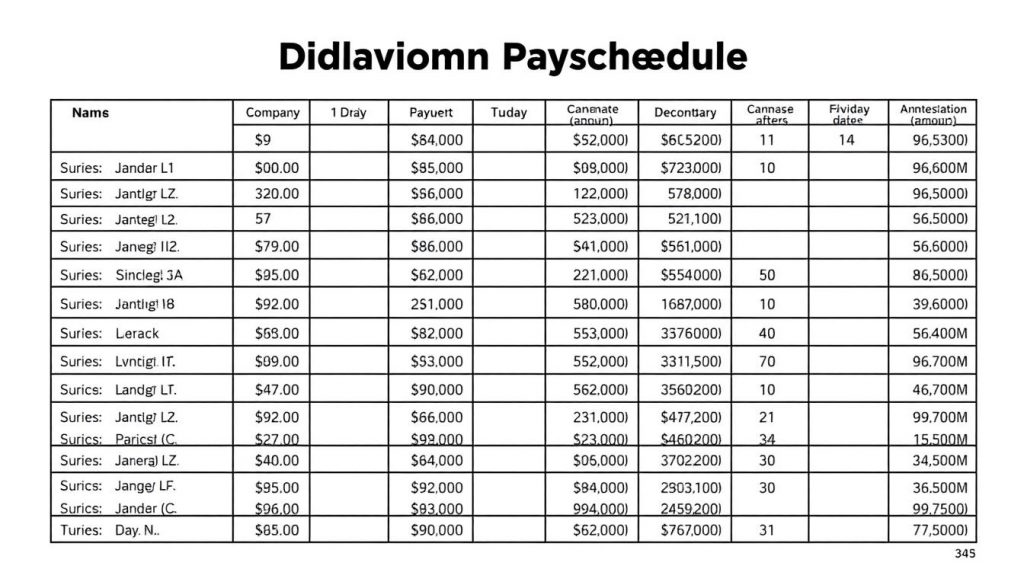Are you tired of waiting for your investments to pay out? Imagine having a steady stream of income every week. This could give you the financial freedom you’ve always wanted.
Earning weekly dividends is possible for those who know about dividend investing. By using a proven investing strategy, you can get regular income. This helps you reach your financial goals.
With the right strategy, you can unlock the potential for weekly payouts. This way, you can take control of your financial future.
Key Takeaways
- Learn how to earn weekly dividends with a proven investing approach.
- Understand the benefits of dividend investing for regular income.
- Discover the potential for generating consistent weekly payouts.
- Explore a reliable strategy for achieving financial freedom.
- Unlock the secrets to a steady stream of income through investing.
The Power of Dividend Investing for Regular Income
Dividend stocks give investors a special perk: weekly pay. They are great for those wanting steady income. As you dive into dividend investing, you’ll see how it can make a reliable passive income stream.
Why Dividend Investing Creates Reliable Cash Flow
Dividend investing brings in regular cash through dividend payments from big companies. By investing in dividend stocks, you become a part-owner. You get a share of their profits. This leads to a steady income, which is great for those wanting stability.
The Psychological Benefits of Receiving Weekly Payments
Getting weekly pay from dividend investments feels good. It makes you feel secure financially and lowers stress. Plus, it keeps you on track with your long-term money goals.
How Regular Dividends Differ from Growth Investing
Dividend investing is all about regular income, not just growing your money. Growth investing can be risky and unpredictable. But, dividend stocks are from stable companies. They are safer to invest in.
Adding dividend investing to your plan can balance your portfolio. It gives you steady income and still lets your money grow over time.
Understanding the Weekly Dividend Concept
The idea of weekly dividends is changing how people earn regular income from stocks. It offers more frequent returns than the usual quarterly or monthly payments.
Traditional Quarterly Dividends vs. Weekly Income Strategy
Most dividend investing is based on quarterly payments. But, a weekly income strategy can give you steady cash flow. This is great for those who need their investments for daily living costs.
By mixing stocks with different payment times, you can get income every week. This makes your income more regular.
How to Structure Your Portfolio for Weekly Payments
To get weekly dividends, you need to plan your portfolio well. Pick stocks that pay at different times to get money all month. A diverse portfolio can lower risks and boost your chances of steady returns.
The Mathematics Behind Consistent Weekly Income
The secret to weekly income is in the math of dividend investing. By choosing a mix of stocks with different pay schedules, you can get income every week. For instance, look at this table showing a dividend payment schedule:
| Stock | Payment Frequency | Annual Dividend |
|---|---|---|
| Stock A | Weekly | $100 |
| Stock B | Monthly | $400 |
| Stock C | Quarterly | $1200 |
By spreading your investments across different pay times, you can get a steady weekly income. This improves your overall investment plan.
My Personal Journey to Weekly Dividend Success
My journey to weekly dividend income was filled with early mistakes and lessons. I learned that financial independence through dividend investing needs knowledge, patience, and strategy.
Early Mistakes and Lessons Learned
In the start, I made big errors like not diversifying and not checking a stock’s dividend history. But these mistakes showed me the value of doing my homework and spreading risk.
- Failing to diversify my portfolio
- Not thoroughly researching dividend history
- Not having a clear investment strategy
How I Developed This Weekly Payment System
I built my weekly system by picking dividend growth stocks known for steady payments. I also looked into different payment schedules to balance my portfolio.
This mix of payment schedules helped me get a steady income that meets my financial goals.
My Current Results and Income Streams
Now, my dividend portfolio brings in a steady weekly income, helping me reach financial independence. I’ve found that dividend investing is a long-term game that needs constant learning and adjusting.
“The key to successful dividend investing is not just about picking the right stocks, but also about creating a sustainable income stream that can weather market fluctuations.”
Follow My Dividend Investing Strategy for Weekly Pay: The Framework

My dividend investing strategy aims to give you a steady weekly income. It’s based on several key principles to help you reach your financial goals.
The Core Principles of Weekly Dividend Investing
The heart of my strategy is understanding the value of diversification and dividend investing. By choosing stocks with various payment schedules, you can get a steady income.
Consistency and patience are key. It’s not about quick wealth; it’s about steady income over time.
Setting Realistic Income Goals Based on Investment Capital
To set achievable income goals, you must consider your starting investment and the dividend yield. For example, with $10,000 and a 5% yield, you could earn $500 a year in dividends.
The Three-Tier Portfolio Structure for Weekly Payments
I recommend a three-tier portfolio for weekly dividends. This means spreading your investments across monthly, quarterly, and special dividend payers.
| Investment Tier | Dividend Frequency | Example Stocks |
|---|---|---|
| Tier 1 | Monthly | MSTY, TSLY |
| Tier 2 | Quarterly | CONY, ULTY |
| Tier 3 | Special Dividends | Various Stocks |
By using this framework and organizing your portfolio, you can get a steady weekly dividend income. Remember, the main thing is to be consistent and patient. Dividend investing is a long-term game.
Building Your Weekly Dividend Portfolio
Creating a successful weekly dividend portfolio starts with a mix of stocks. This mix should include different dividend payment frequencies. This way, you can get a steady income that helps you reach your financial goals.
Selecting Stocks with Different Payment Schedules
To make a strong weekly dividend portfolio, pick stocks with different payment times. Choose a mix of monthly, quarterly, and special dividend payers. Monthly dividend stocks give you regular income. Quarterly dividend stocks follow a more traditional schedule. Special dividend payers add extra income, but their payments are less regular.
Balancing Monthly, Quarterly, and Special Dividend Payers
It’s important to balance different dividend payers for a steady weekly income. Spread your portfolio among monthly, quarterly, and special dividend stocks. This helps you get the payment frequency you want.
Recommended Allocation Percentages by Dividend Frequency
Having the right balance in your portfolio is key. Here are some suggested allocation percentages:
Monthly Dividend Allocation (25-30%)
Put 25-30% of your portfolio in monthly dividend stocks. This gives you a steady income. Consider stocks like TSLY and CONY for this.
Quarterly Dividend Allocation (60-65%)
Most of your portfolio, 60-65%, should go to quarterly dividend stocks. These are often more stable and provide a steady income. Look for well-established companies with a history of quarterly dividends.
Special Situation Allocation (5-10%)
Set aside 5-10% for special situation stocks, like those with special dividends. Stocks like ULTY might fit here, offering higher returns but with a bit more risk.
By following these guidelines and choosing the right dividend stocks, you can create a weekly dividend portfolio. It will meet your income needs and support your long-term financial goals.
Key Dividend Stocks for Your Weekly Payment Calendar

To make a weekly dividend calendar, pick stocks with different payout times. You need a mix of monthly and quarterly payers for a steady income. This mix helps keep your income coming in every week.
Monthly Dividend Stocks Worth Considering
Monthly dividend stocks give you a steady income. They’re key for a weekly dividend calendar. Here are some top picks:
- Real Estate Investment Trusts (REITs) like Main Street Capital Corporation and AGNC Investment Corp
- Business Development Companies (BDCs) such as OFS Capital Corporation
- Other monthly payers like Coronation Oil & Gas
Quarterly Dividend Champions to Include
Quarterly dividend stocks are common and add to your weekly income. Here are some top ones:
- Johnson & Johnson, known for its consistent dividend payments
- Procter & Gamble, a dividend aristocrat with a long history of payouts
- Coca-Cola, another established company with a strong dividend track record
Deep Dive into MSTY, TSLY, CONY, and ULTY
Let’s look closer at some stocks for a diversified dividend portfolio.
MSTY: Payment Schedule and Yield Analysis
MSTY has a high yield and pays monthly. This makes it great for regular income. Its yield is around 12%, paid monthly.
TSLY also pays monthly and has a good dividend history. It has a yield of about 10%. It’s good for regular income and growth.
CONY and ULTY: Strategic Portfolio Placement
CONY and ULTY are monthly dividend stocks. They’re good for a weekly income stream. They offer high yields and diversify your income.
Adding these stocks to your portfolio makes a strong weekly dividend calendar. It meets your income needs well.
Creating Your Personalized Dividend Payment Schedule
Creating a dividend payment schedule tailored to you helps manage your income better. You need to know when your dividend stocks pay out. Then, organize these dates into a clear calendar.
Mapping Out Payment Dates Throughout the Year
To start, map out your dividend stocks’ payment dates for the year. Track the ex-dividend and payment dates for each stock in your portfolio.
Tools and Resources for Tracking Dividend Schedules
Many tools and resources can help track dividend schedules. These include financial calendars, websites focused on dividends, and portfolio management software. Using these tools makes managing your dividend income easier.
Sample Weekly Payment Calendar
A weekly payment calendar is a great template for organizing your dividend income. Here’s an example:
January-March Payment Schedule
- January 15: Monthly Dividend Stock payment
- February 1: Quarterly Dividend Stock payment
- March 15: Monthly Dividend Stock payment
April-December Payment Schedule
- April 1: Quarterly Dividend Stock payment
- May 15: Monthly Dividend Stock payment
By following this structured approach, you can create a personalized dividend payment schedule. It aligns with your investment goals. This helps you achieve financial independence through passive income from your stock market investments.
Implementing the Strategy: Step-by-Step Guide
To start earning weekly dividends, follow a simple step-by-step guide. This guide will help you set up your brokerage account, make your first investments, and manage your dividend portfolio well.
Setting Up Your Brokerage Account Properly
The first step is to set up a good brokerage account. Look for brokerages with low fees, many investment options, and great customer service. Choose ones that offer commission-free trades and have a variety of dividend stocks, like MSTY and TSLY.
Make sure your account is ready for dividend investing. You might also want to consider a tax-advantaged account, like an IRA, to boost your returns.
Making Your Initial Investments
After setting up your account, it’s time to invest. Pick a mix of dividend stocks with different payment schedules for a diverse portfolio. Spread your investments across monthly, quarterly, and special dividend payers for a steady weekly income.
Establishing Automatic Dividend Reinvestment When Appropriate
Consider automatic dividend reinvestment to grow your portfolio. This feature lets you use your dividend payments to buy more shares, increasing your returns. But, if you need the dividend income for living expenses, you might not reinvest all of it.
Monitoring and Adjusting Your Portfolio
It’s important to keep an eye on your dividend portfolio. Watch dividend payment schedules, stock performance, and any changes in dividend policies. Be ready to adjust your portfolio by rebalancing or adding new stocks to keep your weekly income steady.
By following these steps and sticking to your strategy, you can earn a reliable weekly dividend income. This income can help you reach your financial goals.
Tax Considerations for Weekly Dividend Investors
It’s key to know how taxes affect your weekly dividend income. When you invest in stocks like CONY and ULTY, you earn regular income. But, you also face tax obligations.
The tax on your dividend income depends on its type. Qualified dividends come from U.S. or qualifying foreign corporations. They’re taxed at a lower rate than regular income.
Understanding Qualified vs. Non-Qualified Dividends
For a lower tax rate, dividends must meet specific conditions. They must come from a U.S. corporation and be held for over 60 days. Non-qualified dividends are taxed as regular income.
Tax-Advantaged Accounts for Dividend Investing
Using tax-advantaged accounts can lower your taxes. For example, putting dividend stocks in a 401(k) or IRA can delay taxes until you withdraw. This can cut your current tax bill.
Record-Keeping Best Practices for Tax Season
Keeping accurate records is vital for tax compliance. Track dividend payments, including the ex-dividend date and amount. This info is needed when filing taxes. Use a spreadsheet or financial tool to keep your records in order.
By grasping the tax effects of your weekly dividend income and using tax-advantaged accounts, you can improve your investment plan. This way, you can also reduce your tax burden.
Scaling Your Weekly Dividend Income Over Time
Scaling your weekly dividend income takes planning and effort. As your portfolio grows, so does your potential income. This brings you closer to financial freedom.
Reinvestment Strategies for Exponential Growth
Reinvesting your dividends is a key strategy for growth. It uses compounding to increase your income over time. Setting up a dividend reinvestment plan (DRIP) can automate this process, maximizing your returns.
When to Add New Capital to Your Dividend Portfolio
Adding new money to your portfolio can boost your income. Use a part of your regular income or windfalls for this. It’s important to balance investing with keeping an emergency fund for stability.
Realistic Timeline to Financial Independence
Reaching financial independence through dividends is a long-term goal. The time it takes depends on your initial investment, monthly contributions, and stock performance. By investing in quality stocks and reinvesting dividends, you build a steady stream of passive income.
Adjusting Your Strategy as Your Portfolio Grows
As your portfolio grows, review and adjust your strategy. This might mean rebalancing, exploring new stocks, or tweaking your reinvestment plan. Stay proactive and adapt to market changes to keep your income growing.
Conclusion: Your Path to Consistent Weekly Dividend Income
You now see how dividend investing can bring in steady weekly income. You’ve learned how to set up your portfolio, pick the best stocks, and plan your dividend payments. This is your guide to making money every week.
Remember, dividend investing is a long-term plan. It’s about building a steady income that helps you reach your financial goals. With a smart strategy and a diverse portfolio, you can get a regular weekly income.
To get the most from your investments, keep an eye on your portfolio and make changes when needed. Stay updated on the companies you’ve invested in. This way, you’ll be on the path to financial freedom through dividend investing.
Begin building your weekly dividend income today. Follow the steps in this article. With patience, discipline, and the right plan, you can have a steady income for your financial future.
FAQ
What is dividend investing, and how can it generate weekly income?
Dividend investing means buying and holding stocks that give out part of the company’s earnings to shareholders. By mixing different stocks, you can get income every week.
How do I structure my portfolio to achieve weekly dividend payments?
To get weekly dividends, mix stocks with different payment times. Use a three-tier portfolio to balance this.
What are some key dividend stocks that can help me achieve weekly payments?
Look at monthly and quarterly dividend stocks for weekly payments. Research their payment schedules, yield, and growth.
How do I track and manage my dividend payment schedule?
Make a dividend payment schedule for the year. Use dividend calendars to track your income.
What are the tax implications of weekly dividend investing?
Weekly dividend investing has tax rules, like qualified and non-qualified dividends. Know these to optimize your strategy.
How can I scale my weekly dividend income over time?
Grow your income by reinvesting, adding capital, and adjusting your strategy. This leads to exponential growth and financial freedom.
What are some recommended allocation percentages for monthly, quarterly, and special dividend payers?
Allocate 25-30% to monthly, 60-65% to quarterly, and 5-10% to special situation stocks. Adjust based on your goals and risk.
How do I get started with implementing the weekly dividend investing strategy?
Start by opening a brokerage account and investing. Set up automatic reinvestment. Monitor and adjust your portfolio to meet your goals.

